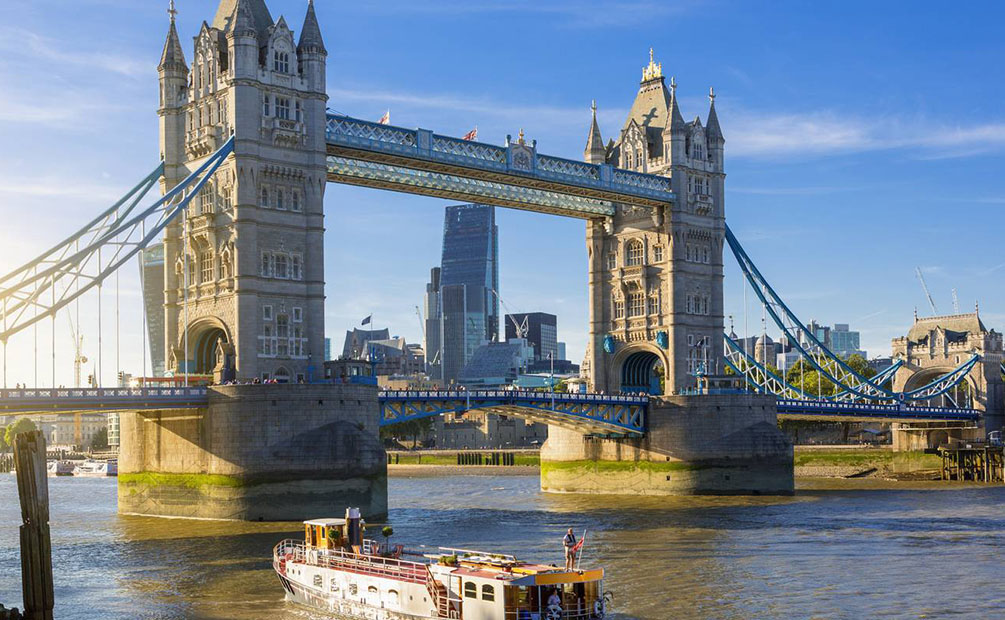
Understanding Travel Insurance:
Travel insurance acts as a safety net during our explorations, offering financial protection against unforeseen circumstances that could disrupt our trips. It’s a safety measure that covers various aspects, providing peace of mind while traversing new territories. From medical emergencies to trip cancellations and lost luggage, travel insurance can be a valuable companion.
Types of Travel Insurance and Coverage:
Certainly! Travel insurance comes in various forms, each designed to address specific facets of travel-related risks. Understanding these types is crucial in selecting coverage that aligns with individual needs.
Medical coverage stands as a pivotal aspect of travel insurance, offering financial protection in scenarios of unforeseen illness or accidents during a trip. This coverage ensures access to medical treatment, hospital stays, and emergency services without bearing the exorbitant costs that might arise in a foreign country.
Trip cancellation or interruption insurance steps in when unforeseen events force a traveler to cancel or cut short their trip. It serves as a safety net, reimbursing pre-paid and non-refundable expenses such as flights, accommodations, or tour bookings affected by unexpected circumstances like illness, natural disasters, or other emergencies.
Baggage insurance is another essential component, safeguarding against the unfortunate loss, damage, or theft of luggage during travel. It provides compensation for belongings lost in transit or damaged during the journey, offering a degree of financial coverage and alleviating the stress of such incidents.
Comprehensive travel insurance, on the other hand, serves as an umbrella policy that integrates various coverages into a single plan. This comprehensive option provides a wider safety net, encompassing multiple facets such as medical emergencies, trip cancellations, baggage loss, travel delays, and even some additional perks like coverage for adventure activities or rental car damages.
These distinct types of insurance are tailored to address specific risks travelers may encounter, allowing individuals to tailor their coverage according to their priorities and potential concerns during their journeys. Understanding these nuances empowers travelers to select insurance plans that align with their needs, providing a safety net against unexpected adversities and ensuring a more secure and worry-free travel experience.
Procuring Travel Insurance:
Acquiring travel insurance indeed follows a straightforward procedure, offering convenience and accessibility to travelers seeking coverage for their journeys. The process primarily entails online procurement through either insurance providers’ websites or reputable travel agencies, streamlining the acquisition of insurance for prospective travelers.
The initial step involves selecting the preferred coverage that aligns with the specific needs and concerns of the traveler. Whether it’s comprehensive coverage encompassing various aspects like medical emergencies, trip cancellations, and baggage loss, or specific coverage tailored to address particular risks, the selection process allows travelers to customize their insurance plans based on their preferences.
Following coverage selection, the subsequent steps involve filling in personal details, which serve as essential information for the insurance provider. This includes standard identification particulars such as name, date of birth, contact information, and sometimes social security or national identification numbers. Additionally, furnishing comprehensive travel details, including trip dates, destinations, and any pre-existing medical conditions, assists insurers in tailoring coverage accurately.
The final stage of the process involves payment for the selected insurance plan. Online platforms generally offer secure payment gateways, enabling travelers to complete the transaction seamlessly. Once the payment is processed, the insurance policy is typically issued electronically, providing immediate coverage confirmation and documentation.

Documentation required for procuring travel insurance usually encompasses personal identification details to verify the traveler’s identity and confirm eligibility for insurance coverage. Travel-related information, such as trip itineraries and destinations, assists insurers in assessing the potential risks associated with the journey and tailoring coverage accordingly.
This streamlined online process for securing travel insurance aims to simplify and expedite the acquisition of coverage, offering travelers the flexibility to choose suitable plans, provide necessary details, and complete transactions conveniently from the comfort of their homes or while on the go.
Optimal Local Insurance and Comparisons:
In the realm of travel insurance in London, seeking the most cost-effective option often leans towards comprehensive coverage. Take, for example, TravelSure in London, renowned for offering comprehensive plans at rates considered competitive within the market. The allure of such plans lies in their extensive coverage, which spans various facets of travel risks.
However, amid the plethora of available options, conducting a thorough comparison becomes imperative. Each insurance provider presents a unique proposition, catering to different needs and budgetary considerations. GlobalGuard, for instance, might specialize in providing specific coverage at comparatively lower prices, focusing on particular aspects such as medical emergencies or trip cancellations, offering a more targeted approach at a reduced cost.
On the other hand, TravelEase might present itself with slightly higher premiums but compensates with added perks and benefits. These perks could encompass specialized coverage for pre-existing medical conditions, an aspect that might significantly benefit certain travelers requiring specific medical attention during their journeys.
The crucial aspect here lies in understanding individual priorities and assessing what elements of coverage hold paramount importance. While comprehensive coverage like TravelSure might offer an all-encompassing safety net, other options like GlobalGuard or TravelEase cater to specific needs or offer additional perks, making them attractive alternatives.
Ultimately, the choice between these offerings often revolves around striking a balance between coverage breadth, specific needs, and affordability. Conducting a diligent comparison among these options enables travelers to pinpoint the most suitable insurance plan tailored to their unique requirements, ensuring adequate protection against potential travel risks while optimizing value for money spent.
Personal Experiences with Travel Insurance:
In my extensive travels, I’ve consciously chosen comprehensive travel insurance, a decision rooted in prudence and foresight. While the initial cost may appear steeper compared to other options, the sense of security it provides is truly priceless. This particular insurance plan became a steadfast companion, offering a reassuring shield against unforeseen adversities.
The peace of mind garnered from comprehensive coverage is immeasurable. It acts as a safety net, alleviating any apprehensions about potential emergencies that might arise during my journeys. The knowledge that I’m protected against unexpected medical crises, encompassing anything from sudden illnesses to unforeseen accidents, instills a profound sense of assurance.
During one instance, the comprehensive insurance plan proved its worth when I encountered an unforeseen medical emergency. The suddenness of the situation could have easily led to considerable stress, both emotionally and financially. However, the insurance coverage stepped in promptly, ensuring not just financial assistance but also swift and efficient logistical support. This timely aid offered a sense of relief, allowing me to focus solely on receiving the necessary medical attention without worrying about the financial strain.
The essence of travel lies in the freedom to explore and immerse oneself in new experiences without the weight of apprehension. Opting for comprehensive travel insurance has not only provided a financial safety net but has also contributed significantly to the mental ease and emotional well-being during my adventures. It’s a safeguard that transcends monetary considerations, offering a sense of confidence and tranquility that enhances the overall travel experience.
Necessary Documentation and Cost:

Documentation for procuring travel insurance typically necessitates essential identification and travel-related details. A valid form of identification, such as a driver’s license or ID card, is often required, serving as a means of verifying the traveler’s identity. Additionally, passport details, including the passport number and expiration date, are vital as they establish the traveler’s international status and validate their eligibility for insurance coverage during overseas trips. Providing a comprehensive travel itinerary aids in understanding the trip’s duration, destinations, and potential risks, enabling insurers to tailor coverage accordingly.
The cost of travel insurance exhibits variability due to several factors. The primary determinants include the extent and type of coverage desired, the duration of the trip, and the age of the traveler. A comprehensive insurance plan designed to cover a two-week excursion can span a price range of $50 to $150. This fluctuation in cost is contingent upon the breadth of coverage offered within the plan. Plans encompassing a wider range of protections, such as extensive medical coverage, trip cancellation benefits, and baggage insurance, might incur higher premiums due to the increased level of security they afford.
Factors like the traveler’s age also influence insurance costs, as older individuals may be subject to higher premiums due to potentially higher risk factors associated with age-related health concerns. Similarly, the duration of the trip plays a pivotal role, with longer trips typically requiring extended coverage periods, thereby impacting the overall insurance expense.
Therefore, the variance in travel insurance costs is intricately linked to the level of protection desired, the specifics of the trip, and the individual characteristics of the traveler. Understanding these factors is instrumental in selecting an insurance plan that aligns with the traveler’s needs, ensuring adequate coverage without overextending financial resources.
Closing Thoughts:
Travel insurance acts as a safety blanket, offering reassurance amid unforeseen circumstances. Opting for a comprehensive plan in London ensured I could explore with confidence, knowing that I had financial protection in case of emergencies. While upfront costs might seem daunting, the security and peace of mind it provides are priceless, making it a savvy investment for any traveler.


